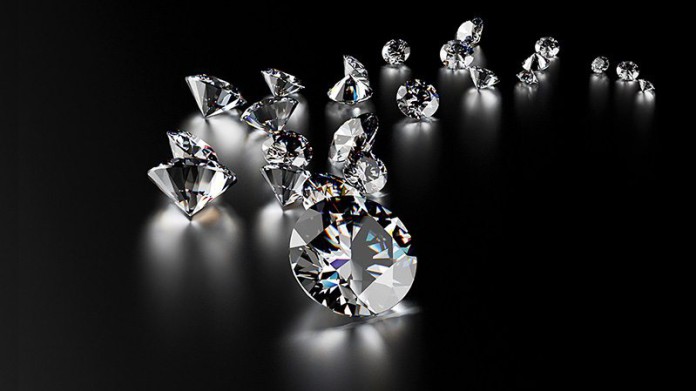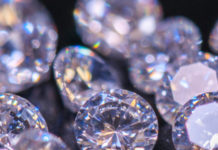
DE BEERS announced improved rough diamond sales for its ninth ‘cycle’, or ‘sight’ of the year, which came in at $390m.
Although lower than the $442m worth of diamonds it sold in the corresponding cycle of 2018, the latest numbers are better than $297m of its eighth cycle reported in October, a level that might represent the year’s nadir.
De Beers conducts ten cycles, that used to be known as sights, a year with selected diamond buyers. The buyers are provided with a mix of unpolished (rough) diamonds at De Beers’ Gaborone sorting facilities in Botswana. Lately, in recognition of difficult trading conditions, De Beers has allowed buyers to defer purchases.
This was in order to ease pressure on the so-called ‘midstream’ of the diamond market – the cutters and polishers – who for a variety of reasons have had to cope with margin pressure this year. This has resulted in lower rough diamond purchases, although De Beers CEO, Bruce Cleaver, said today the market might be improving.
“With signs of increasing polished price stability, Cycle 9 saw an improvement in sentiment from rough diamond buyers,” he said in a statement.
“Global consumer demand for diamond jewellery at the retail level continues to be broadly stable, but with midstream trading conditions still in the process of rebalancing, we offered sight-holders further flexibility during the Sight to provide support,” he said.
“Sales were 31% stronger than our forecast,” said Morgan Stanley in a report. Commenting on Cleaver’s statement, however, the bank said it was “cautious” especially as so much of the market’s future health turned on the signal event of Christmas.
“We currently forecast diamond sales of $300m from the last cycle of the year and see some upside risk to our estimate,” it added.
Average diamond prices have fallen this year an estimated 35% below 2014-17 levels, a development that has hit diamond companies across the board. Share prices for the likes of Petra Diamonds, Lucara Diamonds and Firestone Diamonds have plummeted.
But the signs are for revival. On November 8, Alrosa said it would cut production for 2020 to 34.3 million carats from 38.7 million carats in line with its focus on “price over volume” strategy. It also said it had started to see an improvement in realised prices.
De Beers has also reduced production targets this year and is said to have cut diamond prices for its latest cycle by 5%, according to a report by Bloomberg News.
“De Beers is a price setter and has not made any price cuts thus far, despite the open market price for rough diamonds falling by about 9% year-to-date,” said Edward Sterck, an analyst at BMO Capital Markets.
“The most important market participant finally taking action after holding out for so long feels like a fairly typical indication that things may be about to improve,” he said.
The price cut is unlikely to trickle down to the retail market and consumers shouldn’t expect to see diamond prices getting cheaper anytime soon, said Bloomberg News.
The luxury market is highly competitive whilst the mid-stream is finding it harder to source lending facilities as banks have fled the sector after being hit by frauds and bad loans.
Diamond jewellery demand, however, is still robust. Last week, it released data that showed demand for diamond jewelry rose 2.4% last year. In the US market, where almost half of all diamonds are sold, the increase was 4.5%, said Bloomberg.










